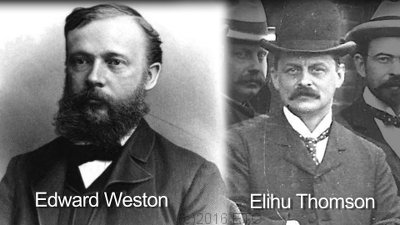
The need to accurately measure the quantity of electricity (amperes) was important since Volta’s battery in 1800, however it wasn’t until the moving-coil galvanometer, also known as the PMMC (permanent magnet moving coil) came about in the 1880s. The PMMC was used for both ammeters and voltmeters. We will start by describing ammeters, the men who developed them and their impact.
To see the science and engineering of the Amp and Volt meter we recommend you watch our short video below, if you already watched this on our Unit 1 page than you can move on.
Advantages: Strong, portable, not dependent on the earth’s magnetic field, could be made very accurate
Disadvantages: Heavy, needed multiple heavy meters to measure different ranges of amperage, could not store data. Heat and vibration can affect the permanent magnet and reduce the accuracy of the device. This type of meter is subject to parallax as well.
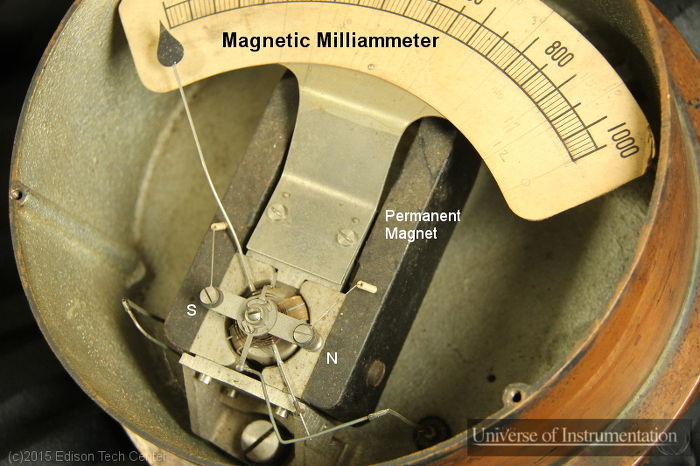
History:
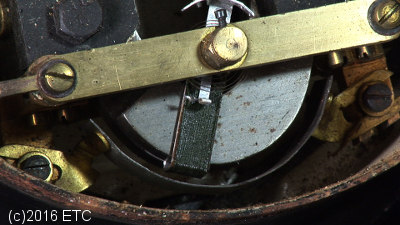 The industry standard of ammeter for many decades was developed by chemist and engineer Edward Weston in New Jersey. Weston’s innovation included a stable permanent magnet and his development of a special Manganin material. The manganin had a very stable resistance value and allowed Weston’s meters to stay accurate. Shallenberger, Thomson and other innovators used Weston’s design to create improved meters over the years.
The industry standard of ammeter for many decades was developed by chemist and engineer Edward Weston in New Jersey. Weston’s innovation included a stable permanent magnet and his development of a special Manganin material. The manganin had a very stable resistance value and allowed Weston’s meters to stay accurate. Shallenberger, Thomson and other innovators used Weston’s design to create improved meters over the years.
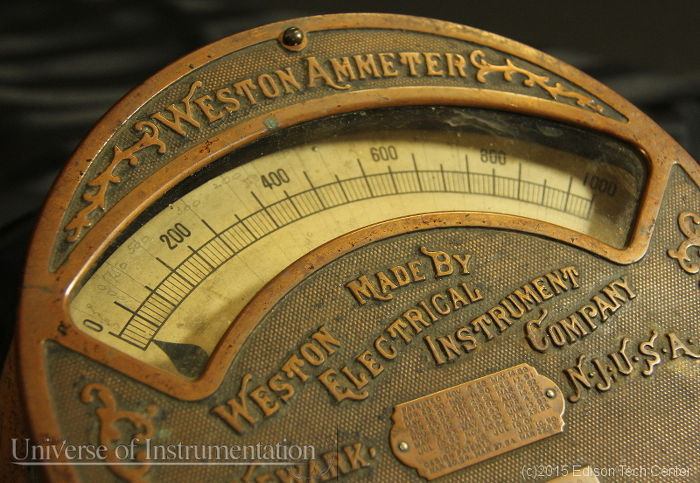
Above is the classic Weston ammeter. We didn’t have multimeters as you have today, you had to select a meter that was designed to take a given range of amps.
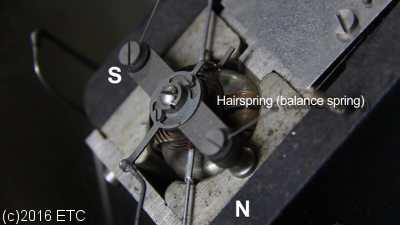
Lets look at the inventors of the ammeter and what they did for the instrument on the next page.
Note: we list sources for all the pages in this unit in our Credits page.
For media licensing see our page here.
